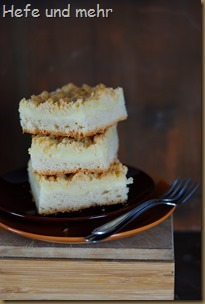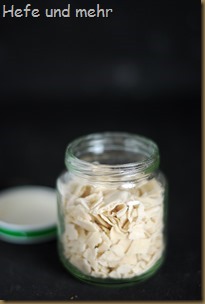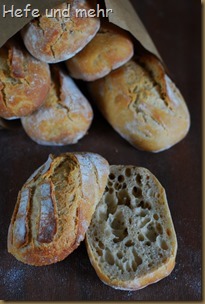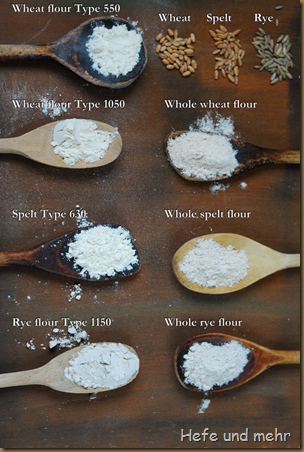
When I was doing my weekly groceries in the wholefood shop I spotted a bag with chestnut flour. Spontaneously I bought it. But after putting it into the pantry to my other flours I forgot about it. But some weeks later, when I put away a new batch of flour, it came back into my notice. And I started to think about a recipe directly.
At the end I decided to bake chestnut “Krusti”. A Krusti is a german roll for which the dough is rolled into a log and which is then baked seamside up. During ovenspring it will open along the seam, forming a good part of crunchy crust. We like this kind if bread very much.
The chestnut flour added a subtle nutty sweetness flavour and gave crumb and crust a niece brown colour. The crumb is very soft and fluffy, while the crust is crunchy. This roll is a new favourite!





 Flour is essential for baking bread. But if you start to compare international flours you will fast realize that the flour types in one country are not easily to translate into flour types of another country. There is no international standard to make flour comparable. And that’s why
Flour is essential for baking bread. But if you start to compare international flours you will fast realize that the flour types in one country are not easily to translate into flour types of another country. There is no international standard to make flour comparable. And that’s why 

 We spent our last summer holiday in the Alsace. And we enjoyed the beautiful landscape, the food and the niece people there very and much – and the bakeries,too! During our holidays I scribbled down a list with breads I had to bake when I’m back home.
We spent our last summer holiday in the Alsace. And we enjoyed the beautiful landscape, the food and the niece people there very and much – and the bakeries,too! During our holidays I scribbled down a list with breads I had to bake when I’m back home.